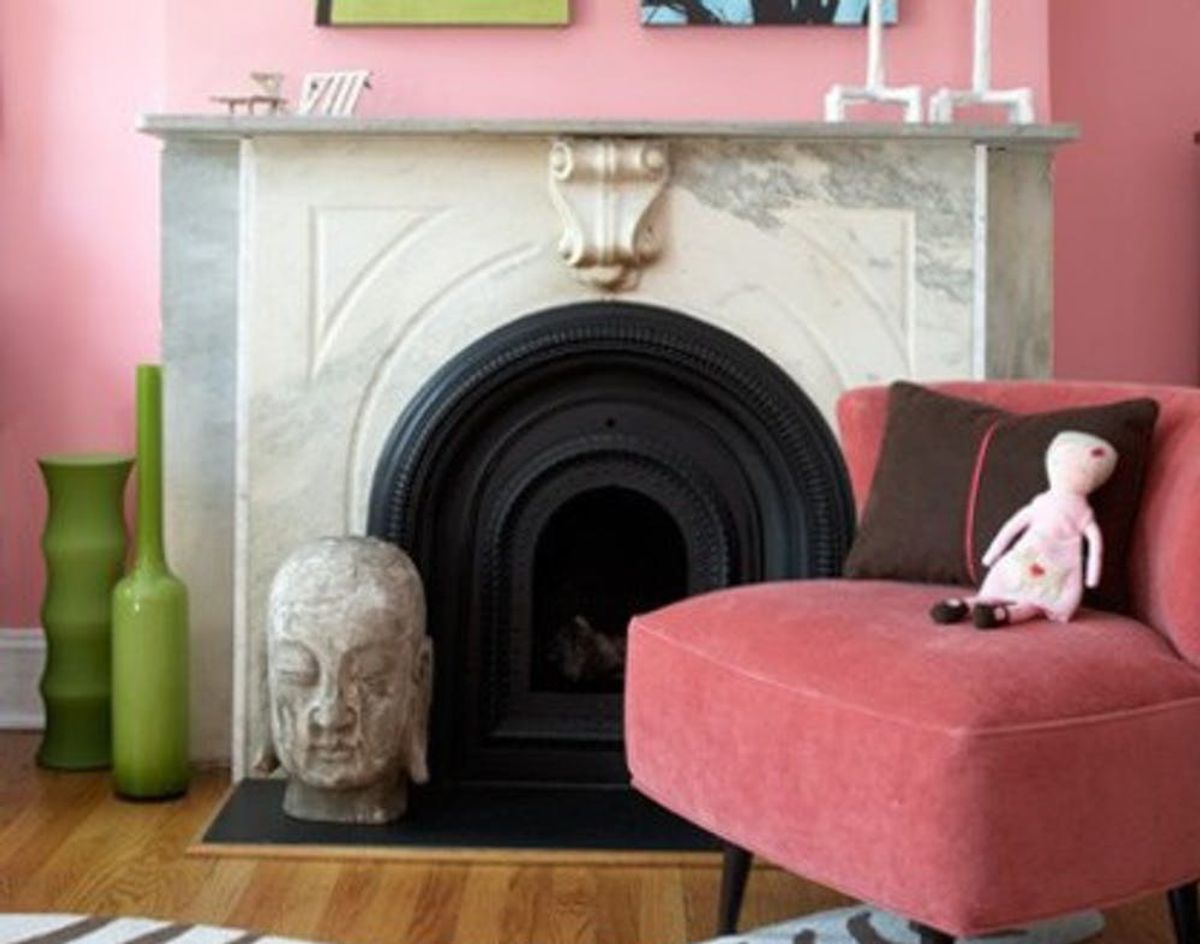Here are some simple tips for having the best darn fireplace ever.
Everything You Need to Know Before Using Your Fireplace

We heart our fireplace. Not only do we orient our furniture toward it, we spend time dressing it up, decorating the mantel and drawing attention to its features. We may even go so far as to create our own non-working version. When temperatures dip, most of us dream of cozying up to a roaring fire. But what if your home has a less-than-desirable fireplace? Maybe you’re not even sure it works? Or perhaps you don’t know how to build a proper fire? Whether you rent or own your home, if you have a working fireplace you should know the very basics about operating it safely. Here are some simple tips for having the best darn fireplace ever.
You don’t need a contractor’s license to understand your fireplace. Knowing its parts will help you when you need something fixed or replaced. A standard, wood-burning fireplace consists of a hearth (the floor in front of the fireplace), the firebox (the “hole” where the wood burns), the damper (the lever that opens or closes the flue) and the smoke chamber and flue (the inside of the chimney that draws smoke up and out). The grate (sometimes called a dog grate) holds the firewood and is elevated to allow for air circulation. Andirons (also known as firedogs) are a pair decorative metal pieces that are designed to further support the firewood.
Give It Some Love
If you feel that your fireplace really needs some work done to the firebox, damper or any chimney, be sure to call in a contractor. If you simply want an updated fireplace screen, andirons or fireplace tools, there are plenty of websites out there that can ship products right to your door. If you already like the screens and accessories you have but they’re looking worse for wear, they may just need a good scrubbing with soap and water. You can also give an old screen a new color. Just be sure to use the right paint for the job (like Rust-oleum High Heat). If you have an old fireplace, like what you’d see in a brownstone, there are all sorts of vintage accessories that can really elevate your style. In the summer you can install a “summer piece” or chimneyboard, which are decorative pieces meant to fit over the opening and keep out the draft. Try a site like Fireplace Antique Store or Ebay.
Master Fire Building
Once your fireplace is deemed safe for use, you’re ready to build that roaring fire. To build the most effective fire you’ll want to use seasoned firewood. Wood that was split over a year ago won’t contribute to creosote buildup or be as smokey. Also, do not burn wood scraps. You don’t know if those scraps were treated with chemicals and you could be burning tainted wood. Take kindling wood (the thinner, drier pieces of firewood) and lay them lengthwise across your grate. Next, take two large logs and lay them perpendicular to the kindling. Finally, lay additional firewood lengthwise on top of the stack. Before you light the kindling, open the damper and hold a lit newspaper up into the flue to warm up the chimney. Now you’re ready to light the fire!
A Word About Fireplace Safety
We don’t mean to put a damper on your flames, but sadly, nearly 14,000 house fires each year originate in the fireplace. Even if you’re a casual fire builder, use common sense when enjoying your fireplace. Sparks and embers can be as hot as a roaring fire, and a screen is your first defense against floating embers. Keep your pretty (albeit flammable) decorations far away from the fireplace when in use. You’ll also want to have your chimney inspected by a licensed chimney sweep (or ask your landlord to provide proof of one). Why? Creosote is a byproduct of burning wood and is highly combustible. It can build up in the chimney, block the flow of air and smoke and actually catch on fire. A chimney sweep is trained to inspect the chimney and remove creosote, which should be done on an annual basis.
What are your best fireplace tips? Let us know in the comments below!


















